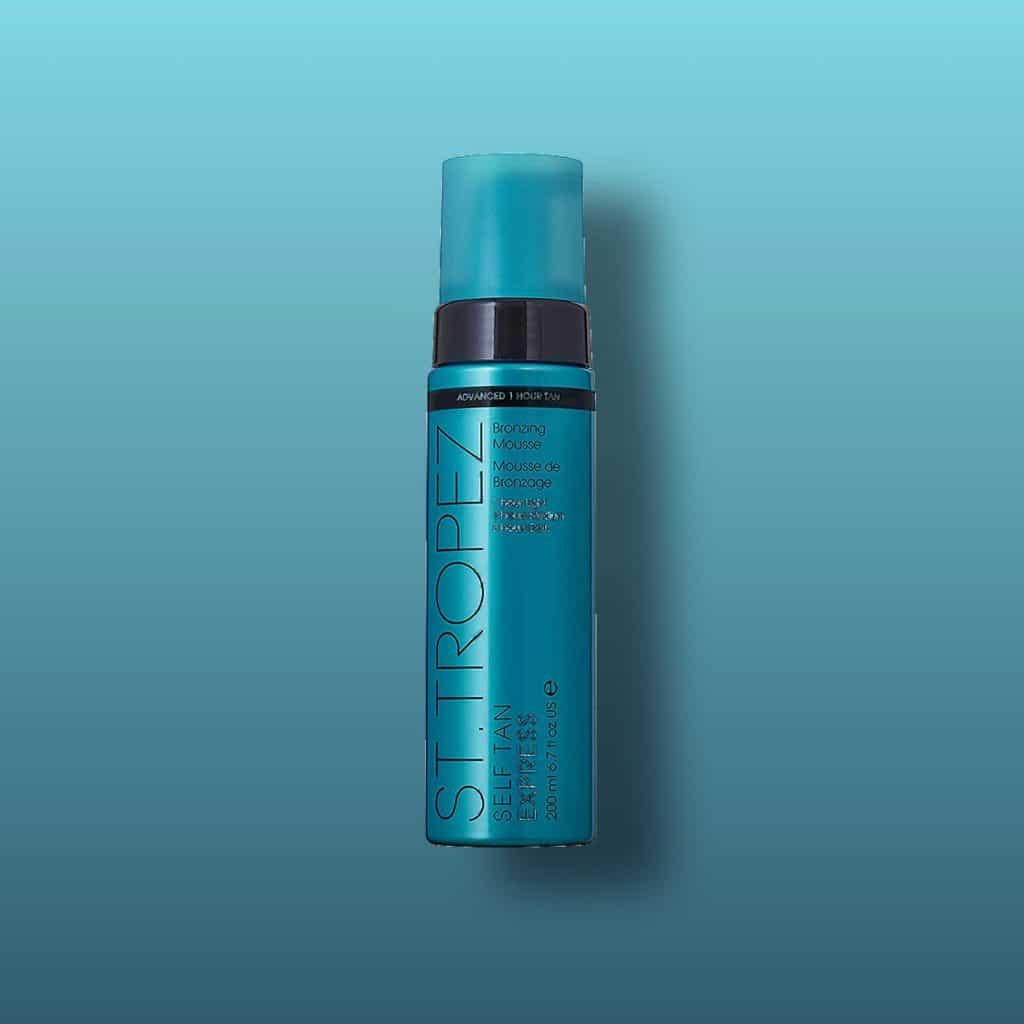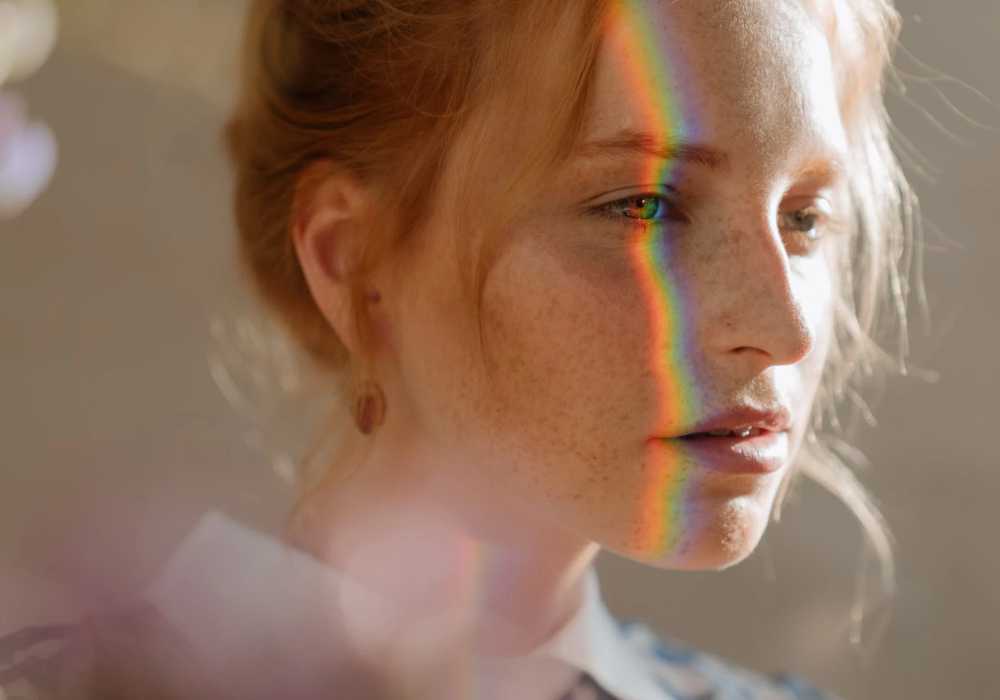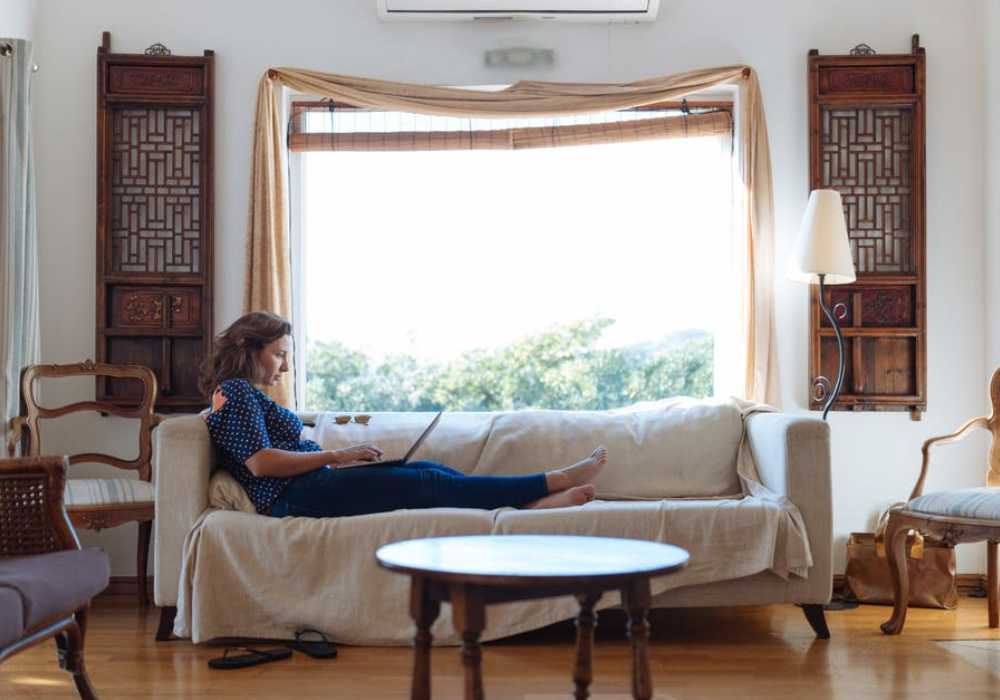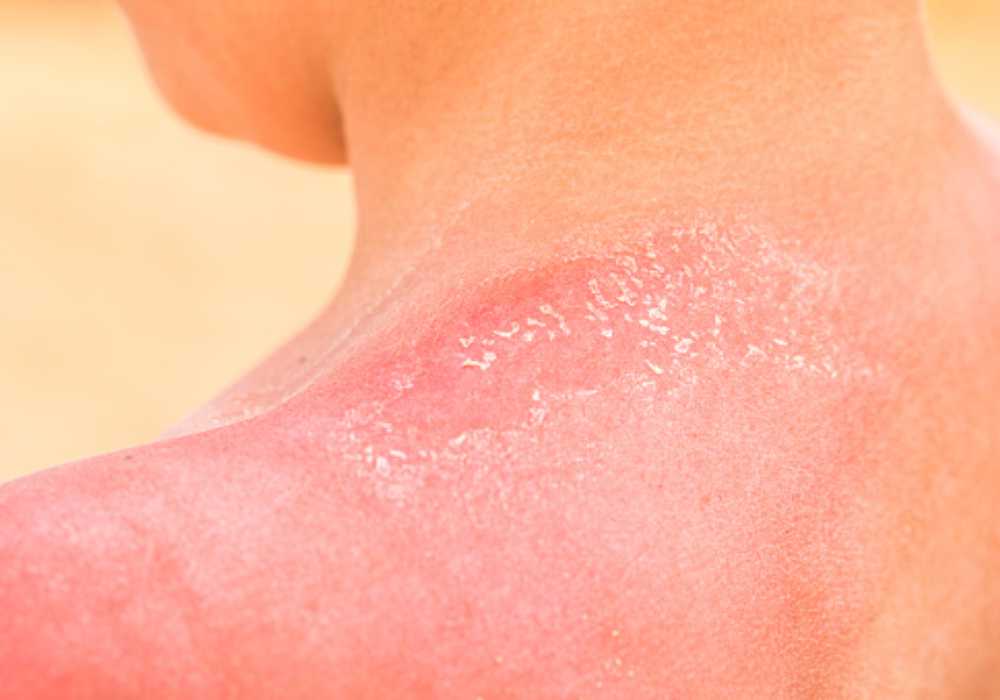As an Affiliate, We may earn a commission that doesn't cost you extra from qualifying purchases using links in this post. It helps keeps this blog running.
The sun might be hiding behind the clouds, but you can still tan if it’s cloudy! During summer, when the sun is high in the sky, everyone feels the heat of the sun. However, during cloudy days, things can get a little cold, but this doesn’t mean that you can’t get tanned. You can tan through clouds so long as the clouds are high enough that your skin gets direct sunlight.
Clouds are the apparent mass or body of water suspended above the air space. They are formed as a result of cooling air that contains vapor from water. Cloud is a major factor that affects tanning because they become a shield that blocks UV rays (also Ultraviolet rays) from sunlight.
There are different types of clouds, and the type of cloud determines the number of effects it has on UV radiation. This sun-powered radiation in turn affects the process of tanning and invariably determines how long and how well the skin gets tanned.
Read A Specific Section
So, Can You Tan On A Cloudy Day?
Yes, you can tan on a cloudy day. However, the amount of tanning that occurs will be significantly less compared to a bright sunny day. This is because clouds block some of the UV rays from reaching the earth, which decreases the amount of UV radiation that is available for tanning.
Although, the ozone on the surface of the earth gets thicker on cloudy days than on sunny days. But as sunlight passes through the layer of this ozone it reaches your skin, allowing you to tan even in cloudy weather. According to the American Academy of Dermatology (AAD), UV rays can still penetrate clouds and reach the earth’s surface. On a cloudy day, UVB rays (the rays that cause sunburn) are blocked more effectively than UVA rays (the rays that cause tanning and skin damage). Therefore, on a cloudy day, you may be less likely to burn but you may still be able to tan.
It’s important to note that even on a cloudy day, it is still important to protect your skin from UV rays with sunscreen. This is why the AAD recommends applying sunscreen with a minimum of SPF 30 and also wearing protective clothing, such as a wide-brimmed hat and sunglasses, to protect your skin from UV damage.
Alternatively, you can opt for self-tanners that don’t require you to step outside in the sun or under the cloud. A good one is the St. Tropez Self Tan Express Advanced Bronzing Mousse
St. Tropez Self Tan Express Advanced Bronzing Mousse
If you’re looking for a quick and easy way to get a sun-kissed glow on a cloudy day without stepping outside or monitoring the cloud, The St. Tropez Express Advanced Bronzing Mousse is a recommended tanning mousse perfect for those who want a natural-looking tan without the damaging effects of the sun. Its fast-acting formula allows you to control the depth of your tan, so you can achieve your desired level of bronze. The mousse is also easy to apply, and dries quickly, so you won’t have to wait long to get dressed. Its gentle and moisturizing formula will leave your skin feeling soft and smooth. This product is a great option for anyone who wants to achieve a golden tan without the hassle of spending hours in the sun.
How to tan on a cloudy day
If you are planning to tan on a cloudy day, it is important that you follow the same steps as you do on sunny days. Just because it is cloudy outside does not mean that you can’t get tanned! Here are the six best ways to tan on a cloudy day:
1) Prepare your skin:
Before you begin tanning, it is important to prepare your skin. You should shower and exfoliate before tanning and dry yourself thoroughly. This will open up the pores on your body so that the UV rays from the sun can easily penetrate through your skin.
2) Apply Sunscreen:
Apply sunscreen with an SPF of 15 to 30, depending on your skin type
3) Choose a part with lesser cloud covering:
Clouds may cover some parts of the atmosphere but there are places where it’s not heavily cloudy, so, choosing the fair sunny part will make your tanning duration shorter than tanning in a very cloudy area.
This is because clouds act like a blanket, keeping the heat. And if you want better tanning results it’s best to be exposed to a fair amount of sunlight.
4) Now begin your Tan:
Depending on the intensity of the cloud, you might need 1-2 hours to get tanned. The heavier the cloud, the more you need to stay under it. Step outside and lay on your tanning bed with your sunglass on, it is important that you remember to keep your sunglass on at all times, to prevent any chances of getting eye irritation or sore eyes from ultraviolet radiation that are harmful to the eyes.
5) Alternate between sides:
Constantly switch sides every few minutes to ensure every part of your body gets a fair amount of sunlight evenly.
6) Drink lots of water:
The more fluids you drink during and after your tanning session, the better it is for your skin. It will ensure that you do not get dehydrated, which can lead to premature aging and wrinkling of the skin.
Can you tan when it’s cold?
The answer to this is yes. You can tan when it’s cold because tanning is not dependent on weather or climate. For as much as the rays from the sun are in view, then you are good. It’s safe to note that while the weather is cold, you might spend more time tanning compared to when it’s sunny, the atmosphere is warm, and the sky is clear.
When the weather is cold, the sun UV rays are still as dangerous, so, apply sunscreen before proceeding with tanning.
SUMMARY: Can I tan during winter when the weather is cold? Yes, you can.
Do clouds block UV rays?
This is an interesting and often debated question. To start with, clouds do not completely block UV rays. They only limit the intensity of the sun’s rays.

Clouds absorb some of the rays (mostly harmful ones) and reflect the rest to shine on the surface of the earth. This makes tanning a little more pleasurable. This, according to skincare experts, implies that tanning is great on cloudy days.
As mentioned above, clouds are merely visible masses of water drops (or droplets) suspended in the air. So, do clouds block UV rays? Can you get tan on a cloudy day? Or, can you tan through the clouds? Definitely a YES!
Secondly, you can tan on a cloudy day easily, because most of the harmful rays from the sun have been filtered out by the clouds, and the UV rays reflected back to the atmosphere are tender, and treats the skin mildly. As a result, you can tan through clouds as the atmosphere becomes perfect for tanning and helps get your skin bronzed mildly and evenly.
What is the best temperature to tan outside?

When it comes to tanning; temperature is not the determining factor, UV rays are. So to say; there is no minimum temperature for getting a tanner skin; you can tan whenever and wherever you want.
Tanning can be done either on sunny days or cloudy days. As established earlier, UV rays are what does the magic. Cloudy days are just as likely to give you a nice tan as sunny days.
Although the effectiveness of the UV rays on cloudy or foggy days is not as strong as it would be on a clear and sunny day, UV rays responsible for tanning still make their way down to earth and can condition the skin to produce the melanin needed for tanning. This means that even throughout your sunbathing on cloudy days your skin will go through the normal tanning process just as well as it would on sunny days.
Are UV rays stronger on cloudy days?
Well, the answer to this is actually Yes and No, and this is because it depends on the kind of UV rays. Although clouds can block some of the harmful UV rays that can cause skin damage, they cannot fully protect against them. Some UV rays on cloudy days are usually stronger than on sunny days.
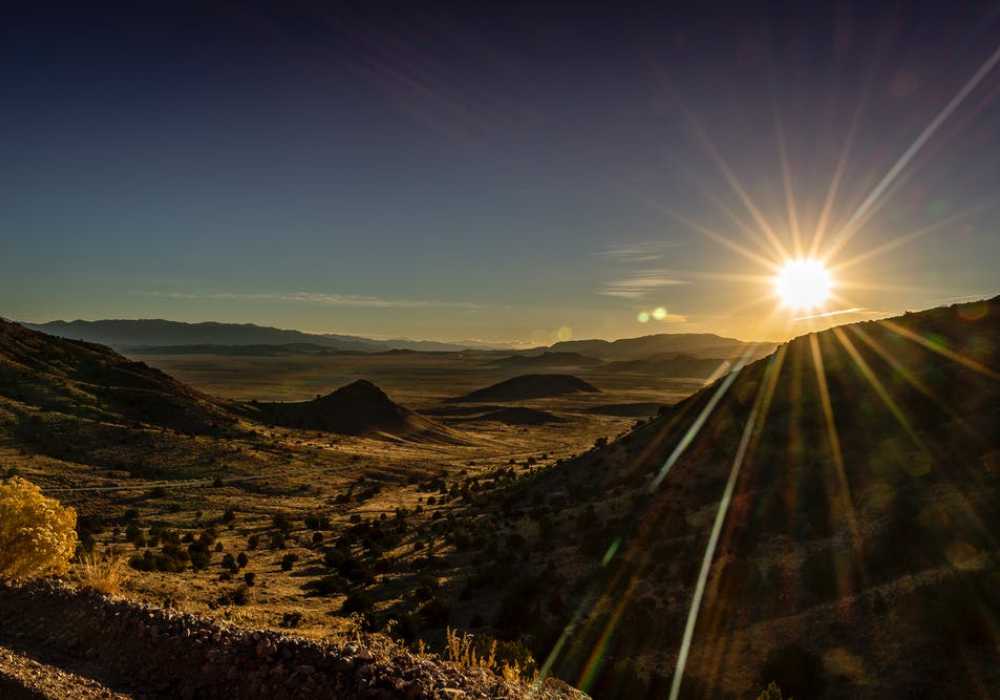
On days when the cloud is broken, the sun emits more UV light which is usually dangerous for the skin, as against when the cloud is thicker. Thicker clouds absorb more UV light and create a perfect condition for tanning.
To tan in cloudy weather, you can reduce your risk by using SPF sunscreen or avoiding direct sunlight for prolonged periods, especially between 10 am to 2 pm when sun heat waves are most hot. It’s understandable that avoidance is easier said than done for some people as this time coincides with employees’ lunchtime! But if you must be outside, you can always make sure you put on long-sleeved dresses to protect your skin from harmful ultraviolet radiation.
Can you get sunburned on a cloudy day?
Yes! you can get sunburned on a cloudy day.
Clouds can only block some of the harmful UV rays that can cause skin damage. If you are in direct contact with strong sunlight for very long, there is no way your body could not be exposed to harmful ultraviolet radiation (UVR). Even if it’s cloudy outside, your risk of getting burned remains high for excessive exposure. So, it’s important to realize that even on cloudy days, sunburn can occur.
Sunburns are reddish burns and pale sores on the skin caused by excess exposure to the rays of sunlight. It also makes the affected part of the skin wane.
So to say; the deciding factor of sunburn is ultimately the condition of the cloud. When cloud surfaces emit more UV light, your chances of getting a sunburn are higher. On the other hand, a thicker cloud means low UV light and lower chances of sunburn.
How long does it take to tan on a cloudy day?

Tanning under normal conditions on a sunny day can take approximately 10-30 mins but it might also take 10 times longer to get tan when it’s cloudy. On average, it can take around 2-4 hours to tan when it’s very cloudy.
It takes more time to tan on a cloudy day because of the many factors that need to be considered. The amount of ultraviolet radiation the body can absorb depends upon several variables including but not limited to:
- Type of cloud cover
- Altitude/latitude
- Season of the year
- Distance of the sun from the equator (this is because when the sun is close to the equator there is intense sunlight and vice versa).
While sunbathing out in the sun for a tan, ensure you alternate both sides of your body one after the other in the sun’s direction. This creates evenness in the skin tone and gives you the glow that you so desire.
Do clouds block Vitamin D?
Yes but not entirely.
Clouds are known to block and reflect back UV rays. Although some of the rays make it back to the earth’s atmosphere, in the process of blocking some rays, the majority of the needed Vitamin D is blocked out leaving only an ignorable amount passing through to the atmosphere and then to the skin.
Ultraviolet (UV) radiation from the sun is a dominant source of Vitamin D for humans and without Vitamin D, we can develop severe health conditions like
- Rickets: A softening and weakening of the bones in children.
- Osteomalacia: A bone disease related to defective mineralization or calcification of cartilage matrix.
- Osteoporosis: The loss of bone mineral density that results in increased susceptibility to fractures.
Generally, Vitamins are very important for body development and they are good nourishing aids. The sun is by right, a natural and major source of Vitamin D. This means that tanning helps to increase the presence of Vitamin D in the human body.
Can you get Vitamin D on a cloudy day?
Yes, tanning on a cloudy day will get you Vitamin D. Experts are of the opinion that the weather and atmospheric conditioning of a place do not totally affect the supply of this type of Vitamin. As said earlier, Vitamin D is a vitamin source type that is relevant for general skin maintenance. It’s primarily obtained through the sun. Therefore, you can get it when tanning in cloudy weather provided the sun is out, even in its faintest light. Tanning, as a skincare and beauty exercise, helps to synthesize the absorbed Vitamin D. The UV rays, although not very hot and striking, on cloudy days helps to remit the Vitamin directly from the sun.
Do I need sunscreen on a cloudy day?
Sunscreens are body creams or lotions applied to prevent the damage of the sun by blocking UV light. The higher the SPF number the more effective the sunscreen will be.
So, Yes, on a cloudy day, you will still have to apply sunscreen. This is because as long as the sun still emits UV light, the skin is still vulnerable to burns. Experts advise that whether or not the air temperature is cool or hot, sunscreens are necessary. They describe them as forms of preventive maintenance against all that can be harmful from sun rays. Additionally, skin cancers can also be prevented when sunscreens are applied either on cloudy or sunny days.
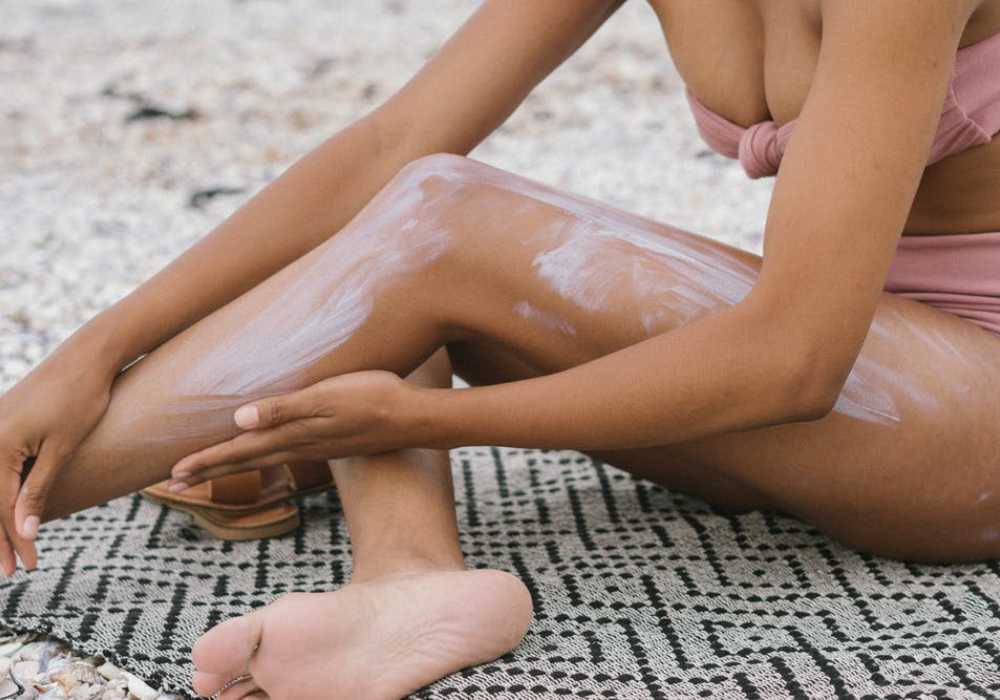
So, if you are going to be outside for a period of time, it’s important that you take measures to protect your skin from harmful ultraviolet radiation. Although you do not necessarily need sunscreen on a cloudy day, it is always best to put sun protection just in case. In addition, make sure you wear protective clothing and hats as an extra layer of sun protection!
What time of the day is best to tan?
Experts advise that you tan before the sun is fully out or when it starts to lose its intensity. This means that the best time of day to tan is before ten (10 a.m.) in the morning or after four (4 p.m.) in the evening. This is a workable position because the sun is most powerful between 10 a.m. and 4 p.m. This way, your skin is bound to have lower chances of getting sunburns or cancer and you still get your tan.
Exposing oneself to the sun while it is still blanching hot is not healthy, and you can always try using a self-tanner if you do not have time to get a great tan yet still want that bronzed glow or dark skin look without exposing yourself to harmful ultraviolet radiation of the sun.
Expert Tip: Stick with the best time of day to tan above and not to be out under direct sunlight for long periods of time. It is also best to wear sunscreen on cloudy days as well as sunny ones.

I’m Akin, your dedicated Editor-in-Chief and a fervent skincare enthusiast. Self-care is my true passion, and each year, I embark on a thorough exploration of self-tanning products, ranging from lotions to mists. This forms the bedrock of our commitment to delivering top-notch information to our readers. My extensive research and precise product rankings empower you to make informed decisions tailored to your specific skincare needs.
Unlock the Secrets to Achieving Your Ideal Tan with This Comprehensive Checklist

